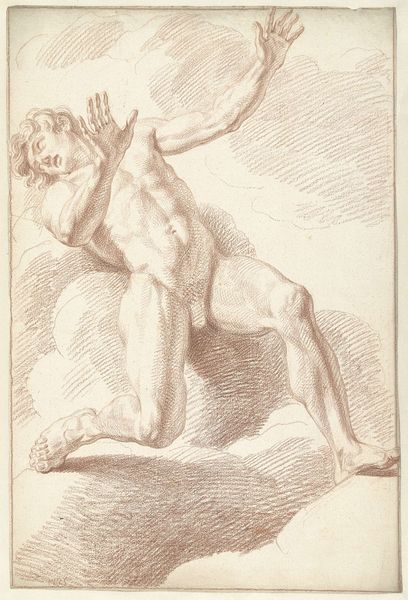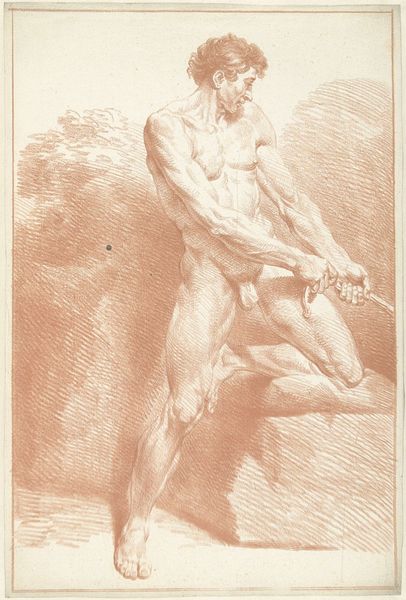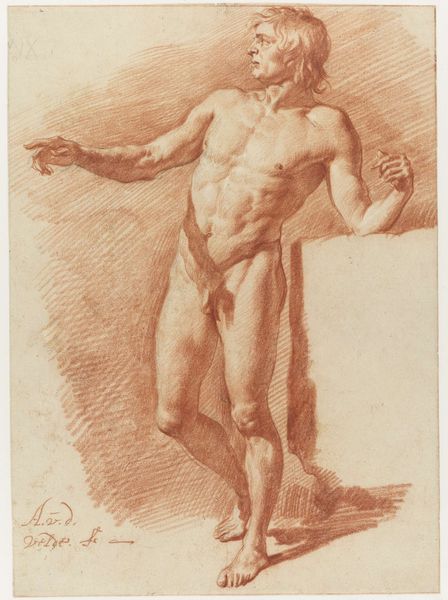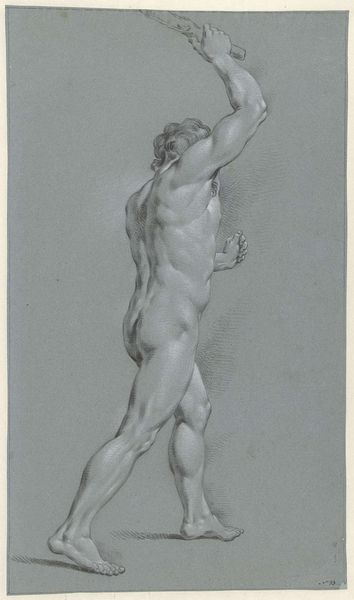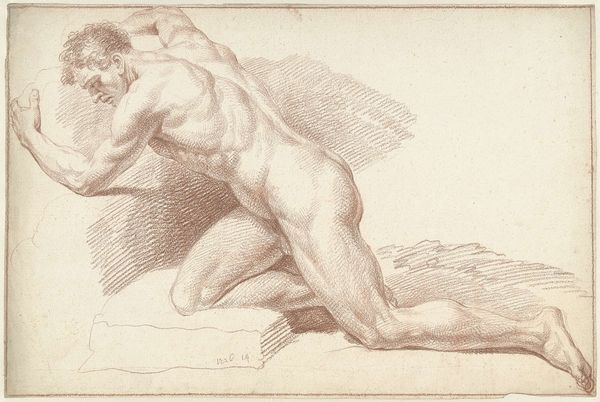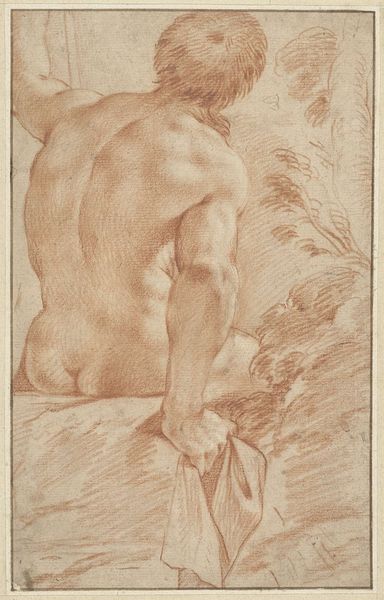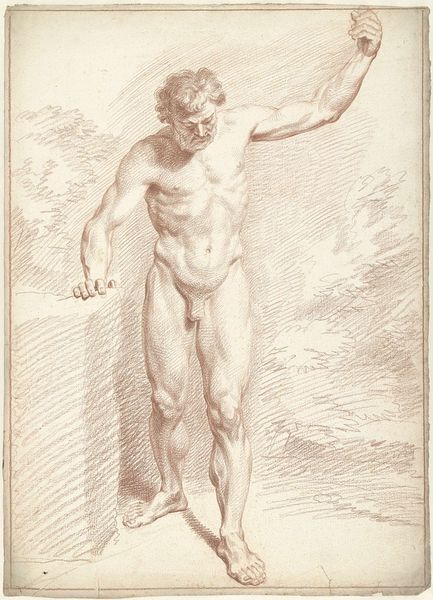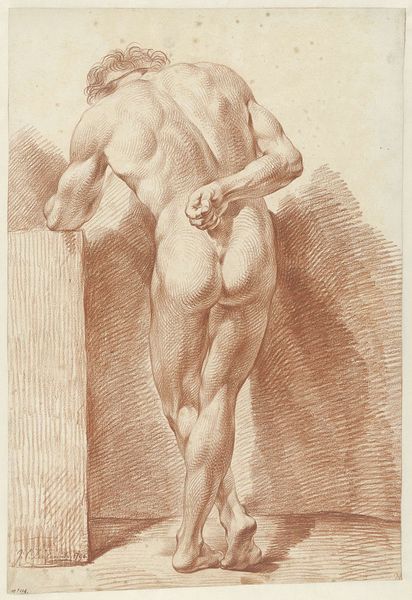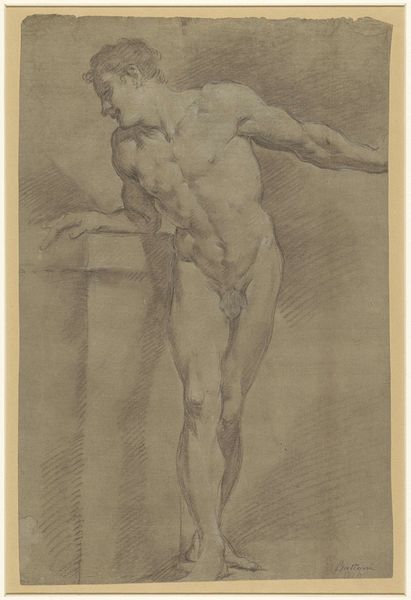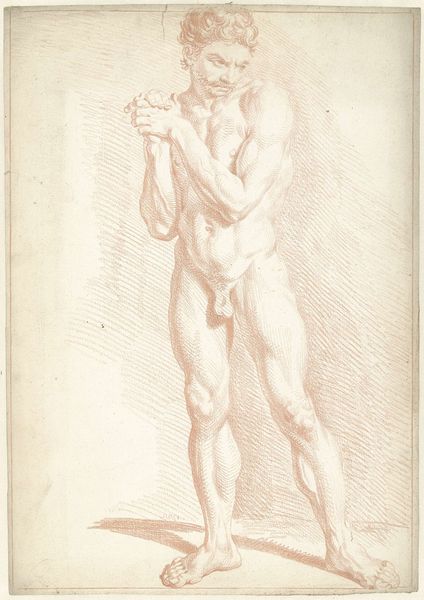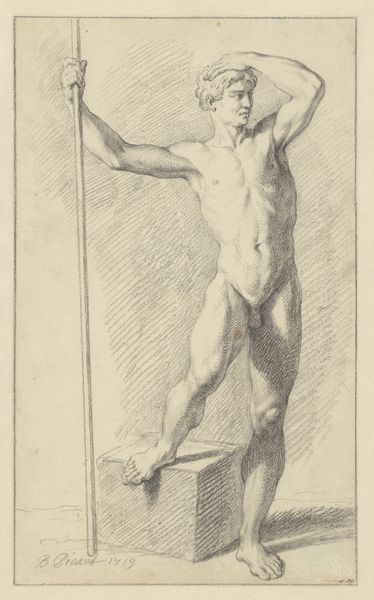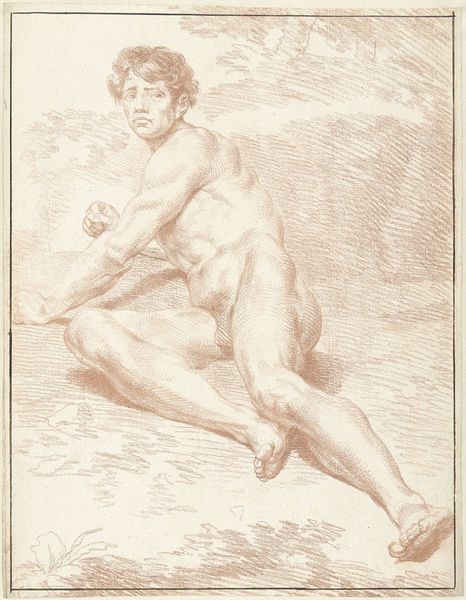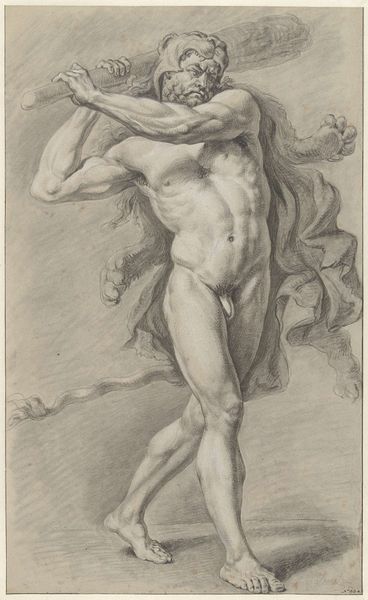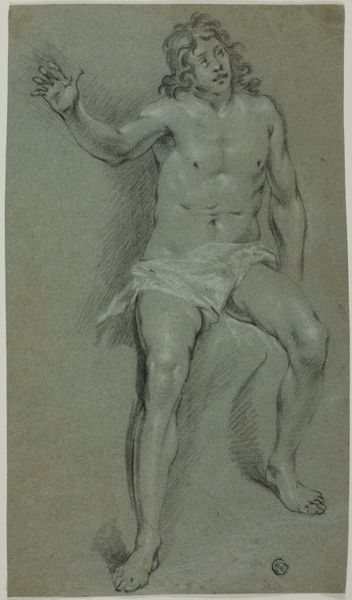
Studie van een mannelijk naakt, op één knie, met een stok boven het hoofd 1735
0:00
0:00
drawing, charcoal
#
pencil drawn
#
drawing
#
baroque
#
pencil sketch
#
classical-realism
#
charcoal drawing
#
figuration
#
form
#
pencil drawing
#
line
#
charcoal
#
history-painting
#
academic-art
#
nude
Dimensions: height 481 mm, width 320 mm
Copyright: Rijks Museum: Open Domain
Editor: Here we have "Study of a Male Nude" by Louis Fabritius Dubourg, created around 1735. It's a red chalk drawing, and something about the pose... it feels very performative, theatrical, almost. What do you see in this piece? Curator: Immediately, I’m drawn to the labor involved. Think about the material conditions: the chalk itself, manufactured and distributed; the paper, also produced through specific processes and often reflecting societal class. What kind of workshop would have generated the demand for such a study? Editor: So, you're focusing on the material production and its context? Curator: Exactly. The nude figure is not just an aesthetic ideal, but evidence of a certain type of training prevalent in that era's art academies, where students would copy models to learn form and anatomy. That repetitive exercise highlights the physical *work* of artmaking. How do the qualities of line – the cross-hatching, the emphasis of muscular form - emphasize that work? Editor: I see that. The shading does seem very deliberate. And the model is holding what looks like a weapon... maybe this ties into the training, to practice historical or mythological scenes? Curator: Perhaps. It also directs us toward the social consumption of such images. Was this meant as a preliminary study for a larger, more ‘important’ history painting? Or was it valuable in its own right, demonstrating the artist’s skill and knowledge, and marketable to a growing audience for fine drawings? Editor: That's fascinating, considering it as a commodity produced by the labor of both the artist and model! I definitely look at it differently now. Curator: Precisely! By analyzing the drawing's materials and potential function, we shift our understanding of art-making from solely aesthetic expression to a form of labor deeply embedded in economic and social networks.
Comments
No comments
Be the first to comment and join the conversation on the ultimate creative platform.
